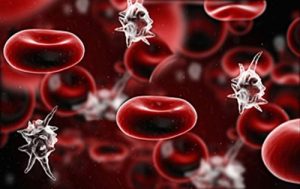6 things to know about cervical cancer
26/07/2019
Cervical cancer is one of the most common cancers in women worldwide. The disease can be cured if detected early. However, most people with the disease do not know they have the disease because the disease often has no prominent symptoms. So let’s learn about the signs of cervical cancer through the article below:
1. What is cervical cancer?
A woman’s cervix is covered with a thin layer of tissue – this tissue is made up of cells. Cervical cancer is caused by cells in the cervix (lower part of the uterus) that begin to grow out of control. These new cells grow rapidly and create a tumor in the cervix.

2. Signs to recognize cervical cancer
Cervical cancer usually develops insidiously over a long period of time (it takes several years). During this time, cells in the cervix will change abnormally due to a change in the vaginal environment or infection with the HPV virus. The deformation of these cells that occurs before cancer appears is called dysplasia or cervical intraepithelial neoplasia (CIN).
The first sign of cervical cancer is abnormal vaginal bleeding, such as bleeding between menstrual periods, longer than normal periods, bleeding after or during menstruation. relationship. Signs of developing cancer may include pelvic pain, abnormal urination, and leg swelling. If the cancer has spread to nearby organs or lymph nodes, tumors can affect the way those organs work, for example the tumor is pressing on the bladder or blocking a vein.
3. The main cause of cervical cancer

Almost all cases of cervical cancer are caused by infection with the papillomavirus (HPV). There are many types of HPV, some of which are high-risk viruses that cause diseases such as anal cancer, cervical cancer, vulvar and penile cancer, and head and neck cancer. Other types of HPV can cause genital warts.
4. Who is at high risk for cervical cancer?
The HPV virus is the leading cause of cervical cancer. The following factors can increase your risk of getting HPV:
- Many lovers
- Your partner has sex with many other people
- Underage sex (under 18 years old)
- Individuals with a history of cervical dysplasia
- Family history of cervical cancer
- Smoking
- Have certain sexually transmitted infections (STIs), such as chlamydia
- Immune system problems
- Your baby is at risk of developing HPV if the mother has taken the drug diethylstilbestrol (DES) during pregnancy.
5. Diagnosis and treatment of cervical cancer

Doctors often use the Pap test to detect abnormal cells in the cervix, which can prevent these cells from developing into cancer. An HPV test can also be combined with a Pap test to screen for cervical cancer and help doctors monitor if a woman has an abnormal Pap test result. In addition, doctors may conduct some more specialized tests to make a diagnosis, such as a biopsy.
Once cervical cancer is diagnosed, your doctor will assess the size of the cancer and how far it has spread. This process may include the following tests:
- Gynecological exam (which may include a rectal exam): examination of the uterus, ovaries, and other organs near the cervix
- Cystoscopy: Uses a cystoscope to look inside the bladder and urethra.
- Colonoscopy: the entire colon is examined with a colonoscope
Most cancers have stages I through IV. The lower the number, the more the cancer has spread. Stage 0 cervical cancer is also known as carcinoma in situ (CIS). In stage 0, cancer cells are present only in the top layer of the cervix. They do not go deep into the layers of cervical tissue or other organs. The remaining stages are called invasive cancer. In these stages, the cancer has invaded the deeper layers of the cervix.
Cervical cancer can be treated with surgery (hysterectomy), radiation therapy, and chemotherapy (using cancer-killing drugs). Depending on the stage of the cancer, the doctor will have an appropriate treatment plan for the patient. After treatment, your doctor may recommend regular cervical cancer screening tests for the first few years to make sure that all cancer cells have been removed.
Bài viết liên quan
- How dangerous is prostate cancer?
- Overview of Acute Coronary Syndrome (ACS)
- Septicemia: Causes, signs and treatment
- Hemophilia: Causes, symptoms, diagnosis and treatment
- Hyperthyroidism and cardiovascular complications
- Some things to know about high blood pressure
- 70% of people with diabetes in Vietnam have not been diagnosed
- Patient satisfaction is top priority: Prime Minister
- Local residents get free medical service



